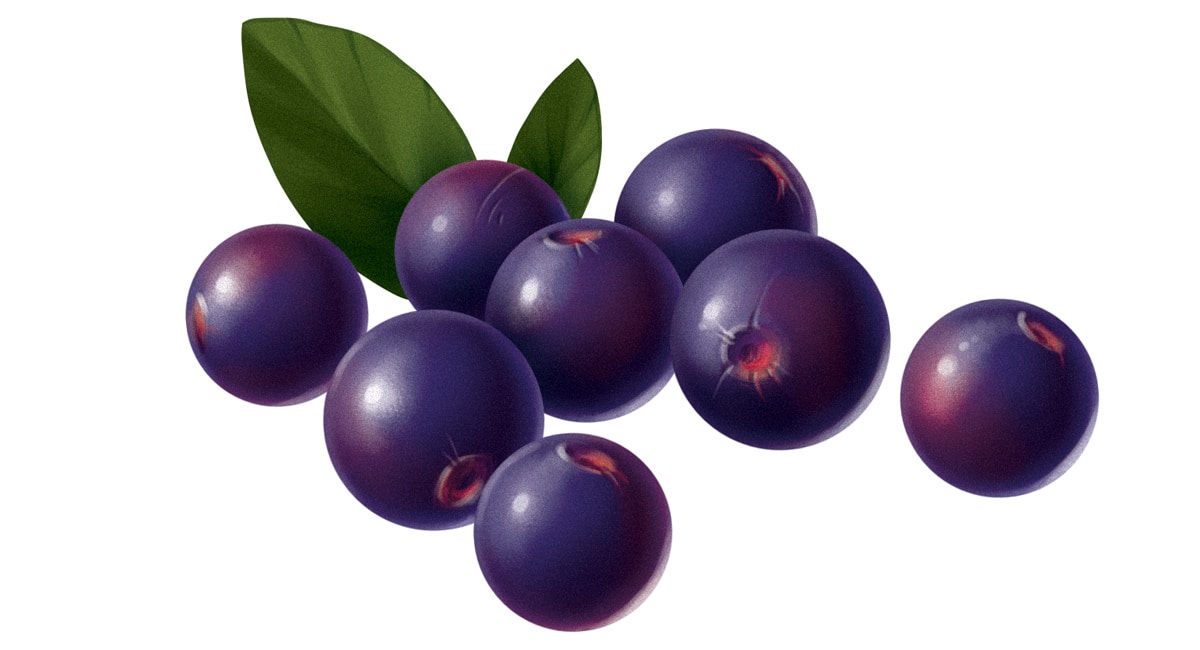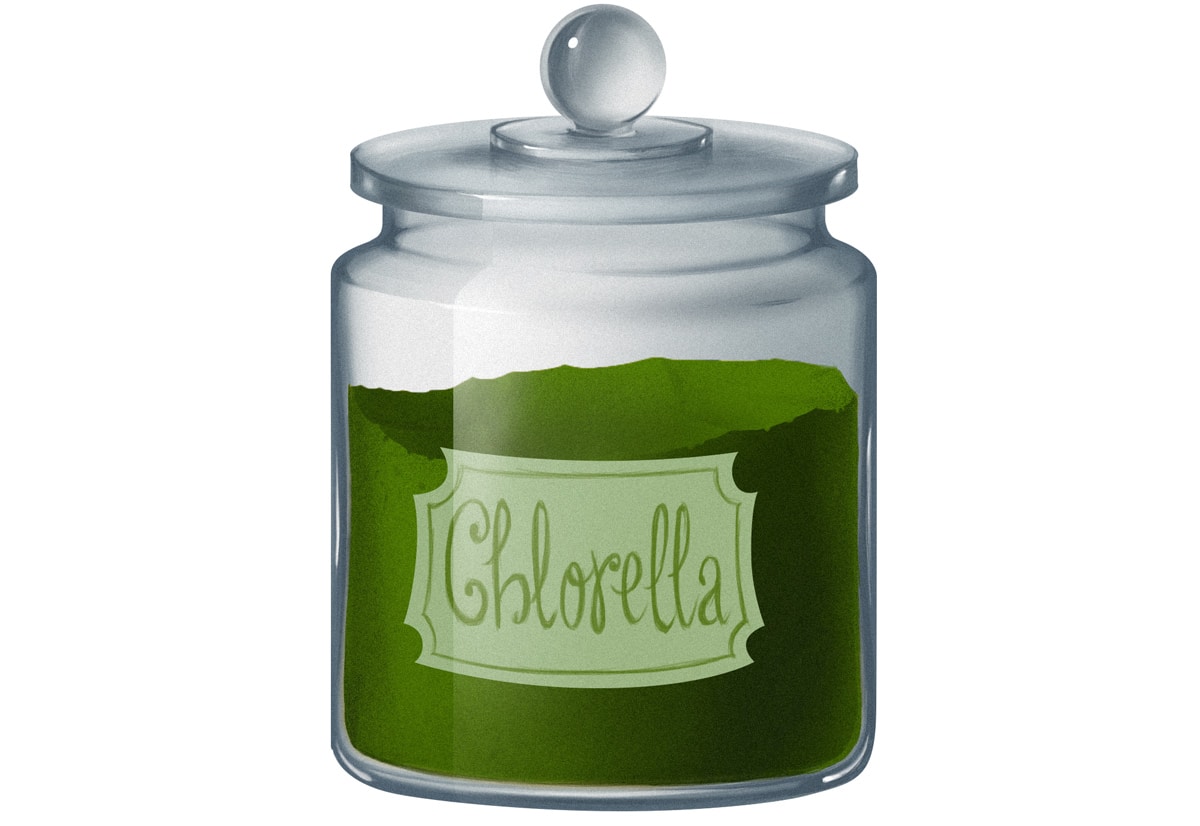“Superfoods” play right into our desire for adventure and romance. They have backstories like characters in fantasy novels: an exotic foreign origin, or maybe they’re the last relics of an ancient tradition that we’ve since lost touch with. They have mysterious powers based on forces that we don’t really understand. And best of all, you too can join in the adventure: just spend half your grocery budget on a tiny bag of
It’s a very seductive promise. And the emotional allure of the mysterious adventure is backed up by a lot of credible-sounding scientific claims about antioxidants, nutrients, and studies. So you can even convince yourself that scratching your itch for adventure is a logical decision too (it’s backed up by science!).
The big problem with all this is that most of these benefits aren’t actually meaningful. Almost all of the outrageous health claims about curing cancer or other diseases are 10% science and 90% marketing hype. “Superfoods” are (mostly) healthy, and if you enjoy them anyway there’s no reason not to eat them, but you can get the same benefits from pretty much any balanced diet. Especially with the more expensive stuff like cacao nibs or goji berries, there’s no reason to go out and spend your hard-earned money on it when ordinary food will do you just as much good.
The Two Types of Superfoods

A glance through the aisles of a health-food store will quickly reveal two basic types of “superfoods:”
- Exotic stuff you’ve never heard of: maca root powder, spirulina tablets, acai berries, etc.
- Ordinary foods like broccoli and blueberries that have suddenly sprouted health properties (reverse mitochondrial malfunction! Anthocyanins! Zeaxanthin!) that you never knew they contained.
Most of the foods in both groups are reasonably healthy, or at least not unhealthy. But none of them are anything particularly special; there’s no reason to think that any one food will miraculously take your health from lousy to amazing, or solve all your nutritional needs at one go.
Type 1: The Ancient Incan Secret Foods
These are the tall, dark, and handsome strangers of the food world. They have exotic names with strange pronunciations and boast all kinds of ancient traditional secrets. They sell themselves with emotional power just as much as health claims. If we fork over the cash, they promise, we won’t just be buying a food; we’ll be buying some part of those ancient traditions for ourselves. We’ll be escaping the increasing loneliness and isolation of the modern world and connecting to something more meaningful and genuine.
Unfortunately, it doesn’t work that way. Unless you are actually part of one of these ancient societies, appropriating their “sacred food” will not make your life any more meaningful. And the nutrition claims are also more or less bogus: most of these foods aren’t any more nutritious than ordinary fruits and vegetables. Just for example, take two expensive “superfoods:” spirulina and chia seeds.
Spirulina: 1 tbsp. of powdered spirulina contains: 20 calories, Vitamin B2 (11% RDA), Vitamin B5 (15%), iron (11%), copper (21%), 1-5% of most other nutrients. That should look pretty ordinary – because it is. There’s nothing wrong with it, but it’s nothing you couldn’t also get from a lot of other vegetables, without all the trouble and expense of the “superfood.”
Chia seeds: 1 ounce of chia seeds contains: 136 calories, B1 (16%), B3 (18%), calcium (18%), phosphorus (27%), manganese (30%), smaller amounts of a few other nutrients, and a reasonably high dose of omega-3 fats. But you could also just eat some fish, which is even more beneficial on the micronutrient front and also a lot tastier.
So in terms of micronutrients, superfoods aren’t particularly amazing. Other health claims focus on their antioxidant content, but even this isn’t anything to brag about. Getting antioxidants from food is supplemental at best; what’s really important are the antioxidants that you make yourself, by getting plenty of sleep and an overall healthy diet. There just isn’t any evidence that taking megadoses of antioxidants from food or any other outside source will make you healthier in any meaningful way.
As a side note, many “superfoods” (wheatgrass and goji berries, for example) appear to be more impressive than they are, because they’re sold in juiced, dehydrated, or powdered form. By taking out all the water (which is heavy but has no nutritional value), this process makes them look more nutritious per unit of weight or volume. But if you juiced, dehydrated, or powdered ordinary foods, you’d come up with a very similar nutrient profile.
Type 2: The Ordinary Foods with Hidden Depths
The second type of “superfood” is something you see on the grocery store shelf every day, but has now magically developed amazing nutritional properties (usually due to some new study). Every other week, there’s another one of these studies, glorifying or demonizing some new food. Coffee, chocolate, and red wine are common culprits, but you’ll also see blueberries, raspberries, broccoli, spinach, kale, almonds, or other foods thrown in for seasoning. And that evidence is often backed up with a lot of science-related words and claims about “research,” so you might simply assume that it’s true.
Don’t. This report is a great eye-opener in that respect: it details what researchers from the United Kingdom found during three years of scouring health news and comparing the claims to what the studies actually said. They found that the stories and marketing materials consistently overstated the case, turning inconclusive, insufficient, or just plain irrelevant research into attention-grabbing headlines about “_____________ will save your life!” Some examples of this kind of shady behavior:
- Reporting correlation as causation. All kinds of things are associated with all kinds of other things. This does not prove that one causes the other. For example, drinking green tea is associated with a lower risk of cancer, but that might just be because people who drink green tea don’t drink as much soda, not because of anything about the tea itself.
- Reporting animal studies as conclusive. Humans are not rats, mice, guinea pigs, rabbits, or fruit flies. Animal tests are interesting, but not enough to prove that the same effect will be true in humans.
- Reporting test-tube studies as conclusive. If you apply pure sulforaphane (a chemical in broccoli) to human blood vessels in a test tube, it seems to protect against some of the damage of diabetes. This is nice, but it doesn’t prove that eating broccoli will cure diabetes.
When they looked at what the studies actually said, the researchers concluded that all of these “superfoods” may be quite healthy, but the research that we have just doesn’t support the marketing claims. As far as we actually have solid evidence to judge, they’re not any more or less healthy on average than other fruits and vegetables.
More is Not Better

So far, we’ve established that the fancy and expensive “superfoods” aren’t any more nutritious that what you can buy in the produce aisle, and that even the more familiar “superfoods” aren’t all they’ve cracked up to be. But wait, there’s more: even if they really were all that nutritious, it wouldn’t necessarily be such a good thing.
Vitamins don’t keep providing benefits the more of them you get. Deficiency is dangerous, but too much is useless or worse. With some vitamins (like Vitamin C), you just eliminate whatever your body can’t use, but other micronutrients (like iron or Vitamin A) can build up in your body and actually be dangerous if you get too much of them.
This can be a little weird to think about. Most of us are used to thinking of micronutrients as “good” – and they are, within reasonable limits. You’re unlikely to get a dangerous amount of anything by eating a variety of different plant and animal foods, but if you start just adding highly concentrated superfoods to your diet helter-skelter, you’re pounding down powerful dietary medicines from all over the world, at much higher concentrations than would naturally be available in any one place or time. Whether or not the foods themselves are natural, that kind of superfood-based diet definitely isn’t.
This isn’t about being afraid of food or nutrients; it’s really about respecting their power. Food can be amazingly powerful, but that same power requires a little care on the part of the user.
Beyond the “Superfood” Mentality
Superfoods are pretty much bunk. There’s no real evidence to support claims that any one particular food will miraculously help you lose weight, cure a disease, or transform your life. And they certainly won’t let you cheat death. Instead of focusing on individual foods, it’s more effective to focus on building an overall healthy diet from the wide variety of fresh, delicious nutrient-dense foods available to you.
This kind of diet has a lot of flexibility. You might love spinach and eat it every day, or you might hate it and avoid it at all costs. If you’re eating a rainbow of other fruits and vegetables on a regular basis, it’s not that big of a deal. The flexibility allows you to cook meals you actually enjoy eating, rather than cramming down some bizarre exotic fruit or powder out of obligation.
It’s also much safer to eat this way. If you were an investor, you wouldn’t invest all your money in just one company: what if it crashed and you lost all your savings? In the same way, don’t “invest” all your Vitamin C in just one food: spread it out over your whole diet so that even if you can’t get one kind of food, the overall impact is minimal.
Then there’s the economic aspect. If you aren’t tied down to any one particular food or supplement, you have a lot more freedom to buy what’s on sale and ignore what’s expensive. And you can certainly avoid the exotic roots, berries, and powders that provide no additional benefits at an incredible additional cost.
So where can you find these nutrient-dense foods? All around you! Take a look at the Eat This series for more information on some particularly notable foods, but remember that these are just suggestions to get you started. A basic Paleo diet is already made up of nutrient-dense whole foods, no special “superfoods” required.





Leave a Reply